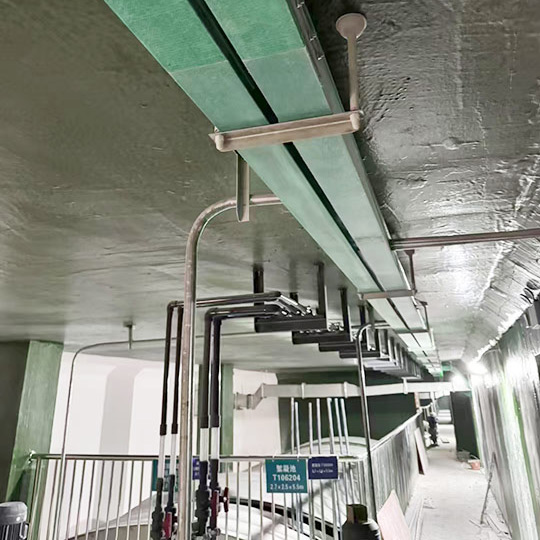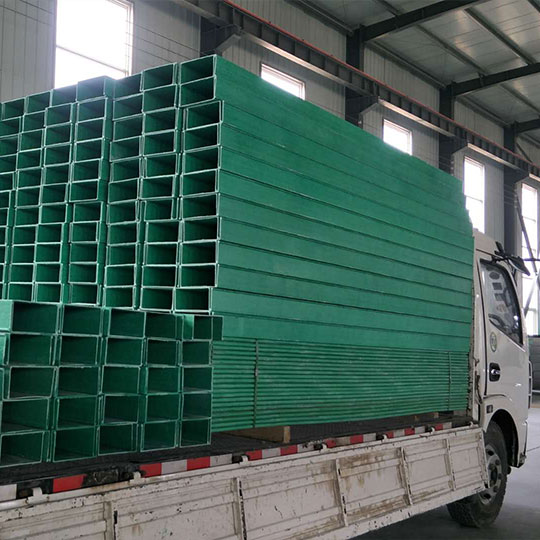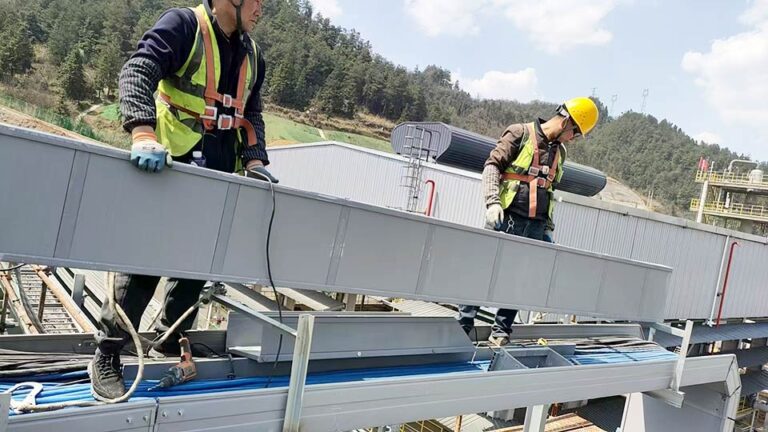
Managing complex wiring systems is a critical challenge in any modern infrastructure project. From sprawling industrial plants to high-tech data centers, ensuring that cables are organized, protected, and accessible is paramount for safety and efficiency. This is where cable trays come in as an indispensable solution. But what are the key cable tray applications, and how do you choose the right type for your specific needs?
This guide explores the diverse applications of cable trays across various industries, showcasing how different materials and designs are engineered to meet the toughest environmental challenges.
Table of Contents
What Are Cable Trays and Why Are They Essential?
Cable trays are support systems used to securely route and protect electrical cables and wires. Unlike conduit systems, they offer superior ventilation, which helps dissipate heat and prevents cables from overheating, especially under heavy loads. Their versatility in design and material makes them the go-to choice for a wide range of modern infrastructure projects.
Core Cable Tray Applications Across Industries
Cable trays are not a one-size-fits-all solution. Their application is highly dependent on the environment and the specific demands of the industry. Here are some of the most common and demanding cable tray applications:
1. Energy Infrastructure & Power Generation
In environments like substations, photovoltaic/wind farms, and power plants, reliability is non-negotiable. Cable trays used here must be high-temperature resistant, anti-aging, and fireproof.
• Recommended Products: Fire-resistant cable trays, which guarantee protection for over 30 minutes in a fire, and durable galvanized steel trays are ideal choices for these heavy-duty settings.
2. Petrochemical and Marine Engineering
These sectors present some of the harshest conditions, with constant exposure to corrosive chemicals, salt spray, and moisture. Cable trays in these applications must offer exceptional resistance to acid and alkali corrosion.
• Recommended Products: FRP (Fiberglass Reinforced Plastic) cable trays are renowned for their corrosion resistance and chemical adaptability. Composite epoxy resin trays also provide excellent protection by combining the strength of steel with the durability of FRP.
3. Rail Transit and Transportation
Projects like subways, high-speed railways, and cross-sea bridges require lightweight, durable, and fire-safe solutions that can withstand environmental stressors like UV radiation. The cable trays for the Jakarta Metro Line 3, for instance, needed to endure 3,200 hours of strong annual UV radiation, 95% humidity, and salt spray.
• Recommended Products: Lightweight and UV-resistant FRP and polymer plastic cable trays are perfectly suited for these demanding transit projects.
4. Intelligent Buildings and Commercial Complexes
In commercial buildings, high-rises, and data centers, aesthetics, ease of installation, and durability are key factors. Cable trays need to be both functional and visually appealing while supporting complex wiring networks.
• Recommended Products: Galvanized ladder cable trays offer excellent ventilation and a clean look, making them a popular choice for underground garages and shopping malls.
5. Heavy Industry and Manufacturing
Steel mills, smelting workshops, and mines are environments characterized by high temperatures, heavy loads, vibrations, and dust. Cable trays here must be incredibly robust, impact-resistant, and often explosion-proof.
• Recommended Products: Heavy-duty galvanized steel and stainless steel cable trays (both ladder and trough types) provide the necessary strength and corrosion resistance for these complex industrial conditions.

Choosing the Right Cable Tray for Your Application
Selecting the right cable tray involves considering the material, design, and environmental conditions. The table below offers a quick comparison of common cable tray types and their primary applications.
| Cable Tray Type | Key Features | Best For Applications |
| FRP (Fiberglass Reinforced Plastic) | Lightweight, high-strength, corrosion-resistant, chemical adaptable. | Marine engineering, petrochemical plants, rail transit. |
| Galvanized Steel | Durable, cost-effective, excellent ventilation (ladder type), rust-resistant. | Power plants, commercial buildings, underground garages. |
| Stainless Steel | Superior corrosion resistance, high-strength, excellent fire resistance. | Industrial, commercial, and hazardous environments. |
| Polymer Plastic | Corrosion-resistant, anti-static, lightweight, aesthetic appeal. | Chemical plants, metallurgy, and other harsh environments. |
| Composite Epoxy Resin | Combines steel strength with FRP corrosion resistance; good heat dissipation. | Chemical plants and environments needing both strength and durability. |
| Fireproof | Coated for fire resistance (over 30 mins), durable, rust and chemical resistant. | Data centers, power plants, underground garages, coastal areas. |
FAQ
What is the main advantage of a ladder-type cable tray?
A ladder-type cable tray provides excellent ventilation and heat dissipation, which helps prevent cables from overheating during operation. This design is also aesthetically pleasing and practical for areas like shopping malls and underground garages.
Which cable tray material is best for corrosive environments?
For environments with high exposure to chemicals, acid, alkali, or salt spray, FRP (Fiberglass Reinforced Plastic) is an excellent choice due to its superior corrosion resistance and strong chemical adaptability. Composite epoxy resin and polymer plastic trays are also highly effective in these conditions.
Are there cable trays suitable for high-temperature industrial settings?
Yes. For high-temperature and heavy-load environments like steel mills or smelting workshops, materials like stainless steel and galvanized steel are ideal due to their high temperature and impact resistance. Fire-resistant cable trays are also designed specifically for these scenarios.
Can cable trays be customized for a specific project?
Absolutely. Leading manufacturers support OEM/ODM customization, allowing you to design material specifications and functions based on your project’s unique requirements. This ensures you get the perfect solution for any scenario, from power generation to mining.
What makes polymer plastic cable trays a good alternative to traditional ones?
Polymer alloy plastic cable trays combine polyvinyl chloride resin with galvanized steel, resulting in a product that is beautiful, corrosion-resistant, anti-static, and offers fast heat dissipation. They often have greater strength than ordinary trays and are considered a new type of material to replace traditional options in harsh environments.




